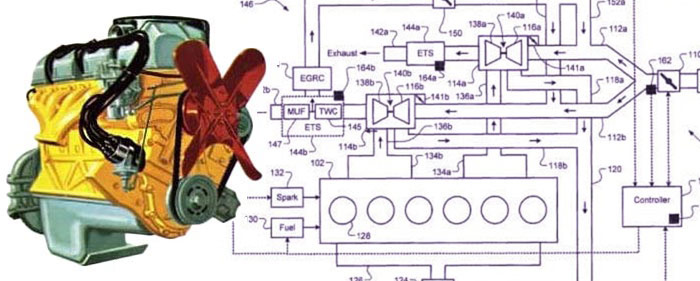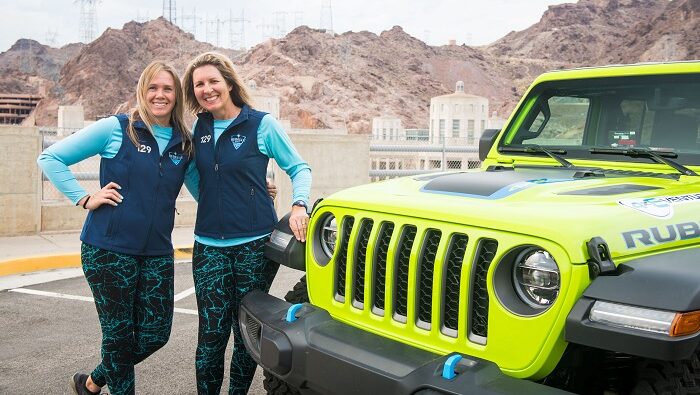Back in January, we first brought up the “Tornado” GME T6 engine—but, as I pointed out at the time, I’d also written about the inline six back at allpar, years ago. Now, other publications are starting to discover the story, in some cases providing credit and more information, and in others simply denying it could possibly exist.
But what about readers’ reactions? We have some selected samples.

From Dustin Gibson:
I would really like to know which model will be getting this engine first. A lot of Jeep Wrangler owners are very interested in this, as the venerable 4.0L was near to our hearts. But I worry that the layout will require more space than the current JL has available. And I find it unlikely that they will do a mid cycle change that would lengthen the nose to allow fitment. I believe that it’s more likely to to be the engine for the JM Wrangler, which is fairly far away.
This seems likely, especially since the JL already has the 4xe and a V8 for extreme buyers. Getting the Tornado under the hood might pose a challenge for JL, but the JM could benefit greatly by having only in-line engines—it increases the space available for suspension articulation, at the cost, possibly, of a slight increase in vehicle length. We do not expect the inline six to be much longer than the current four-cylinders, but in Wranglers, every inch counts.
“vbondjr1” made several posts; this is one example, lightly edited:
The GME-T6 and GME T4 are going to be the start of Dodge’s new performance direction for ICE [internal combustion engines], not the complete end of ICE… we are still going to have major performance out of engines around the 3.0L and 3.5L size. [For example], in non hybrid form, the 3.0L Ecoboost puts down 400hp/415 lb-ft, which is right around 5.7L Hemi numbers. In hybrid form, the 3.0L Ecoboost puts out 494hp/630lb-ft which are 6.4L levels of horsepower with nearly Hellcat torque.. Guilia QF puts out 505hp from a 2.9L V6…
… the 2.0L 4xe can put out 392ci-levels of torque. I think we’re going to see some serious horsepower wars, the likes of which muscle cars have never seen, with 6-cylinder ICE, hybrid, and full electric vehicles….
I’m really feeling like Dodge is going to go back to the root of SRT and bring back that old raw SRT4 and Shelby-GLH feeling with these new cars. Dodge just rolled out the Direct Connection program and turbo cars do well with tuning and bolt on modifications; inline-6 cylinder turbo cars sound amazing when tuned properly and I feel like Dodge will do it right.
I see a lot of potential with this new direction they’re going, I really do. I also feel like they’re going to destroy anything Tesla puts out from now on and I definitely feel like the Chrysler Airflow is going to come out with a Hurst edition model to stomp all over Ford’s Mach E GT Performance package thing.
Confidence in Mopar engineers has rarely been misplaced; they seem to come up with high performance out of nowhere on a regular basis, from the 2.2 Turbo II to today’s Hellcats, whenever corporate leaders give the okay.
One advantage of the turbo engines is lighter weight, especially when the car is redesigned to have less hood space. Less weight means the power has more of an impact. The inline six might well out-torque the 392, especially when set up as a hybrid, and torque is what shoves you back in the seat.
Geoff Gariepy asked, “Is there anything to substantiate the claim that this is possibly the last ICE that Stellantis will develop, or is that just conjecture?” It’s conjecture, but yesterday, Hyundai wrote that they were actually eliminating gasoline engine design jobs. It’s too early for Stellantis to move over; 60% of cars sold in the US are likely to have gasoline or diesel engines through 2030, at least. In addition, much more of Stellantis’ sales go towards specialty vehicles—big pickups, Wranglers, and such.

Numerous other comments deal with a key perceived issue of electric cars: how will we charge them all? These concerns are not the province of a humble Mopar-focused site, but Europe will be doing all this first, including adding curbside charging stations for shoppers and such, and we can learn from their successes and their mistakes. American grids need to be upgraded in any case for security reasons, to handle population movements, and to deal with different power generation; the lower cost of wind and solar, according to Lazard’s analysis, will require changes to the grids—and quite a bit of overbuilding. That’s not even counting issues with energy-hungry cryptocurrencies which would require grid updates even without electric cars.
Whether any of us prefer big Hemis or smaller turbocharged engines, times are changing as they always have (some of us remember fights against fuel injection, but no carburetors remain); and while we can keep our gasoline engines for decades to come, the future of new cars will increasingly belong to forced-induction hybrids and to battery-electrics, partly because they can generate much more torque than affordable gasoline-only cars. Mopar is moving along—and in some cases, such as the new inline six-cylinder, they are doing so counter to those in the industry who are stopping gasoline development entirely.
All global trends aside: surely there many Mopar fans waiting for Chrysler’s “we may be late, but we’re going to clobber whatever’s out there” moment. Hopefully, the “Hurricane,” even if its official name is “turbocharged inline six cylinder engine,” is that Mopar moment.